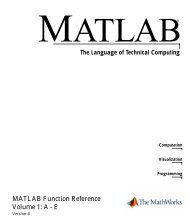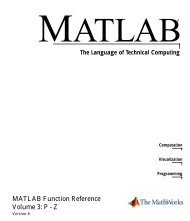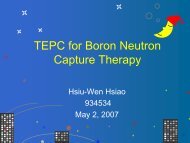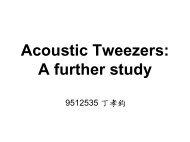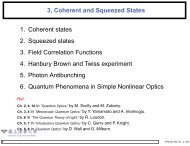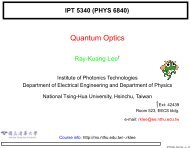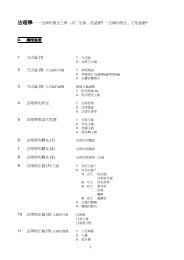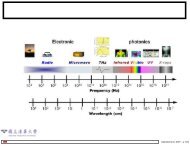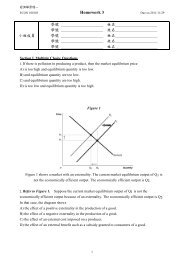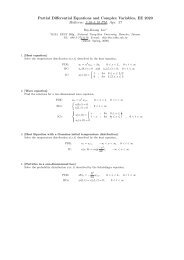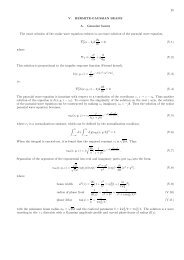Acceleration, Shock and Vibration Sensors
Acceleration, Shock and Vibration Sensors
Acceleration, Shock and Vibration Sensors
Create successful ePaper yourself
Turn your PDF publications into a flip-book with our unique Google optimized e-Paper software.
Chapter 5<br />
Piezoelectric Element<br />
Preload Ring<br />
Seismic Mass<br />
Accelerometer Base<br />
Figure 5.2.1: Basic piezoelectric accelerometer construction.<br />
The active elements of the accelerometer are the piezoelectric elements. The elements<br />
act as a spring, which has a stiffness k, <strong>and</strong> connect the base of the accelerometer to<br />
the seismic masses. When an input is present at the base of the accelerometer, a force<br />
(F) is created on piezoelectric material proportional to the applied acceleration (a)<br />
<strong>and</strong> size of the seismic mass (m). (The sensor is governed by Newton’s law of motion<br />
F = ma.) The force experienced by the piezoelectric crystal is proportional to the seismic<br />
mass times the input acceleration. The more mass or acceleration, the higher the<br />
applied force <strong>and</strong> the more electrical output from the crystal.<br />
The frequency response of the sensor is determined by the resonant frequency of the<br />
sensor, which can generally be modeled as a simple single degree of freedom system.<br />
Using this system, the resonant frequency (ω) of the sensor can be estimated by:<br />
ω = k / m .<br />
The typical frequency response of piezoelectric accelerometers is depicted in Figure 5.2.2.<br />
Piezoelectric accelerometers can be broken down into two main categories that define<br />
their mode of operation.<br />
Internally amplified accelerometers<br />
or IEPE (internal<br />
Relative<br />
Amplitude<br />
Resonance Peak<br />
electronic piezoelectric) con-<br />
<strong>Vibration</strong> of<br />
tain built-in microelectronic<br />
Seismic Mass<br />
signal conditioning. Charge<br />
mode accelerometers con-<br />
Useful Frequency Range<br />
tain only the self-generating<br />
piezoelectric sensing element<br />
<strong>and</strong> have a high impedance<br />
<strong>Vibration</strong> of Base<br />
charge output signal.<br />
Relative Frequency<br />
Figure 5.2.2 Typical frequency response<br />
of piezoelectric accelerometer.<br />
138



